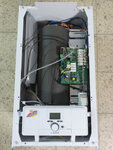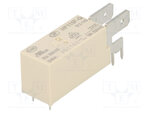endrit
Newbie
Hello everyone, first of all I wish you a good day,
I am a student from the faculty of electrical engineering, and I undertook to design an electronic board.
I am making a superficial description of the project, the project will be implemented in an electric boiler, and the purpose of the project is for the heaters to be controlled by the microcontroller via relays.
So what I ask of you is any advice ,if you have encountered any problems during the design, and how we could make this board have a good longevity?
sincerely
I am a student from the faculty of electrical engineering, and I undertook to design an electronic board.
I am making a superficial description of the project, the project will be implemented in an electric boiler, and the purpose of the project is for the heaters to be controlled by the microcontroller via relays.
So what I ask of you is any advice ,if you have encountered any problems during the design, and how we could make this board have a good longevity?
sincerely

